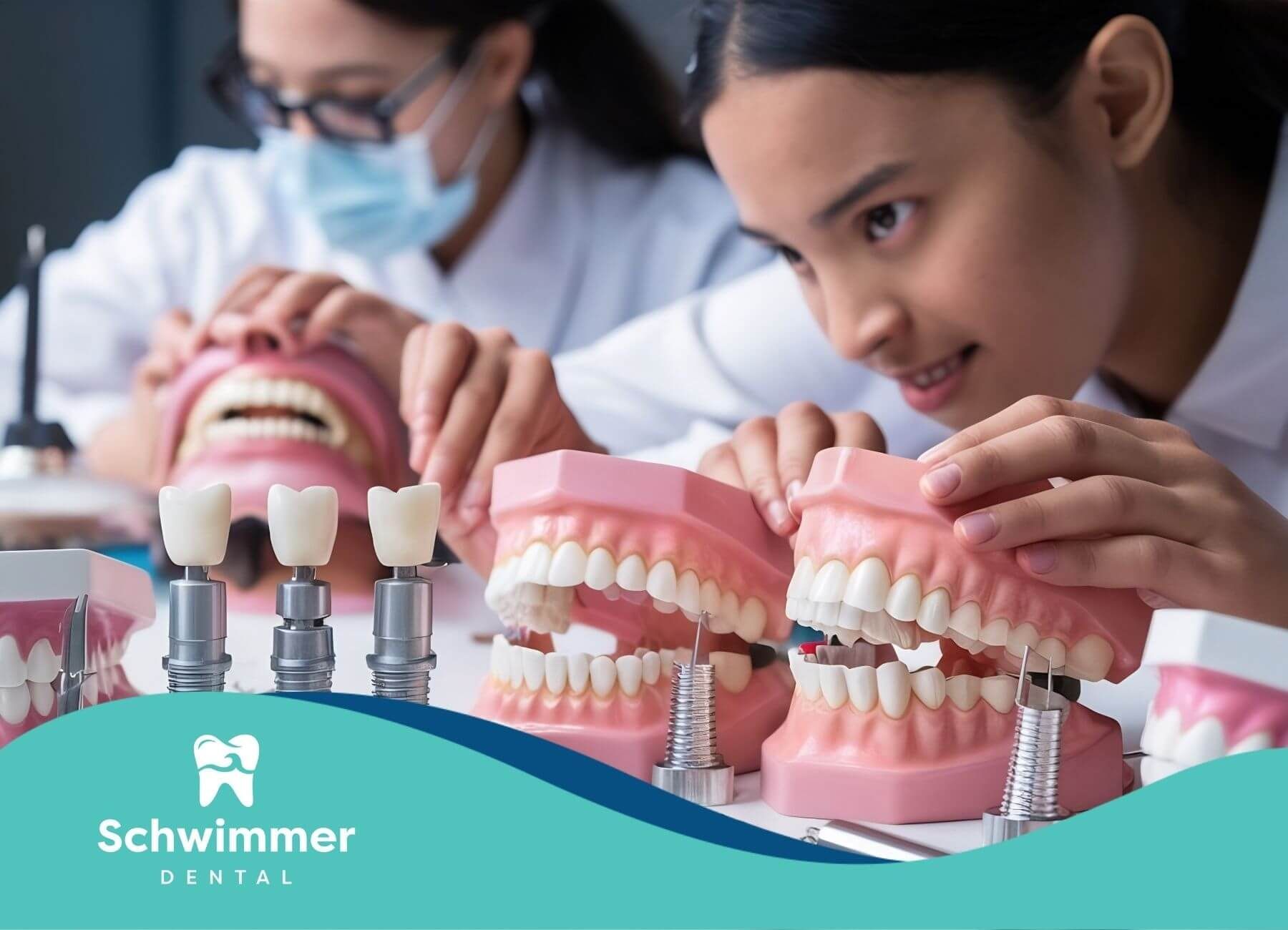Everything You Need to Know About Deep Dental Cleaning and Why It Matters
Key Highlights
- Deep dental cleaning, also known as scaling and root planing, is a non-surgical procedure that targets stubborn plaque and tartar buildup below the gum line.
- This treatment is vital for addressing gum disease, preventing tooth loss, and improving gum health in its moderate to advanced stages.
- Performed by a dentist or hygienist, it involves local anesthesia to ensure comfort during the process.
- Deep cleaning consists of two key steps: scaling to remove plaque and tartar, and root planing to smooth the tooth roots for better healing.
- Common signs of needing a deep cleaning include persistent bad breath, bleeding gums, gum inflammation, or developing periodontal pockets.
- Following proper oral hygiene and regular check-ups post-treatment can drastically reduce the chances of another deep cleaning being needed.
You’ve likely heard that brushing and flossing are crucial for oral health, but sometimes, that just isn’t enough. When plaque and tartar build up below the gum line, it can lead to gum disease and even tooth loss.
That’s where deep dental cleaning comes in. This non-surgical procedure is designed to remove stubborn tartar and bacteria that can’t be cleaned away during a routine checkup.
As a dentist in NJ, I've seen firsthand how a deep cleaning can bring a patient’s gum health back to life. I remember one patient who came in with swollen, bleeding gums and persistent bad breath.
After their deep cleaning, they felt an immediate improvement—swelling reduced, bleeding stopped, and their breath was fresher. It was a turning point in their dental care.
Understanding Deep Dental Cleaning: More Than Just a Regular Cleaning
What Sets Deep Cleaning Apart?
Deep dental cleaning is a bit different from the usual cleaning you might be familiar with.
While a standard dental cleaning focuses on removing plaque and tartar from above the gum line, deep cleaning targets the areas below the gum line—where bacteria thrive.
This procedure becomes necessary when gum disease is present, especially in cases where gums are inflamed, swollen, or even bleeding. Essentially, deep cleaning helps stop the progression of gum disease and protects the bone structure supporting your teeth.
What Makes a Cleaning "Deep"?
Two Essential Steps
The deep cleaning process has two crucial steps: scaling and root planing. Both work together to remove plaque and tartar that have built up over time, improving gum health and preventing further complications.
Scaling: This step involves the removal of tartar and plaque both above and below the gum line. Your dentist or hygienist will use specialized tools—either hand tools or ultrasonic devices—to carefully clean these areas.
Root Planing: After scaling, root planing smooths out the roots of your teeth. This is important because rough surfaces on the tooth roots allow bacteria to easily stick, leading to infection. By smoothing the roots, it makes it harder for bacteria to grow, which helps the gums heal.
Signs You Might Need a Deep Cleaning
How do you know if deep cleaning is necessary? It’s important to pay attention to early signs of gum disease, such as:
- Bleeding Gums: Especially when brushing or flossing.
- Persistent Bad Breath: That doesn’t go away, no matter how much you brush.
- Receding Gums: If your gums are pulling away from your teeth, it could signal an underlying issue.
- Pain or Sensitivity: You might experience discomfort when chewing or when your teeth feel sensitive.
- Deep Gum Pockets: If your dentist detects pockets deeper than 4mm, it may be time for a deep cleaning.
In my practice, I’ve encountered patients who ignored early signs, only to find out that they needed a deep cleaning to restore their gum health. The earlier you address it, the better.
Preparing for Your Deep Dental Cleaning Appointment
Before the Appointment
Preparation for a deep cleaning appointment is simple but important. A good oral hygiene routine—brushing twice daily and flossing regularly—sets the stage for the procedure.
If you’re feeling anxious about the cleaning, let your dentist know. We can provide strategies or techniques to help you feel more relaxed.
What to Expect
Before the procedure, your dentist will review your oral health and may take X-rays to assess the extent of plaque and tartar buildup. Local anesthesia is used to numb the area, ensuring you won’t feel any discomfort during the cleaning.
In some cases, your dentist may suggest breaking the treatment into two sessions, depending on the severity of the gum disease.
Step-by-Step Process of Deep Dental Cleaning
1. Scaling: Removing Plaque and Tartar
The first part of deep cleaning is scaling. The goal is to remove the plaque and tartar that have accumulated on your teeth and below the gum line.
Your dentist or hygienist will use tools like hand scalers or ultrasonic devices to break up and remove the buildup.
- Hand Scalpers: These are precision tools used to manually scrape tartar from tooth surfaces.
- Ultrasonic Tools: These devices use vibrations to break up mineralized tartar and plaque, making it easier to remove.
2. Root Planing: Smoothing the Roots
Once the scaling is done, root planing comes next. This step involves smoothing the tooth roots to remove any rough areas where bacteria can accumulate.
This is a key part of healing because it prevents future infections and helps your gums reattach to the teeth.
How to Care for Your Teeth After a Deep Cleaning
After a deep cleaning, it’s important to continue good oral hygiene practices. Brush your teeth twice a day using a soft-bristled toothbrush and gentle strokes. Floss regularly, but be extra gentle around the treated areas.
Avoid hard or sticky foods that could irritate your gums during recovery. Some patients may experience mild discomfort or swelling, but these symptoms usually subside after a few days.
Conclusion
Deep dental cleaning can make a world of difference for your oral health, especially when it comes to preventing the progression of gum disease.
By removing plaque and tartar from both above and below the gum line, deep cleaning helps to restore gum health and prevent further damage. Regular check-ups, combined with solid at-home hygiene, are key to ensuring the results last.
At Schwimmer Dental, we believe in providing personalized care for each of our patients. If you're dealing with gum disease or think you may need a deep dental cleaning, don’t hesitate to reach out.
Our team is here to help you achieve and maintain healthy gums for life. For more information or to schedule an appointment, contact us at office@schwimmerdental.com. Let's work together to improve your oral health!
Frequently Asked Questions
Is deep dental cleaning painful?
Deep cleaning is usually not painful because your dental professional will use local anesthesia. You may feel some soreness or discomfort after the cleaning. But this can be managed with pain medicine you buy at the store. It is good to talk to your dental professional about any worries you have. This helps make sure you are comfortable during and after the deep cleaning.
How long does recovery take after a deep cleaning?
Recovery from deep cleaning can take a few days. You might have some swelling, soreness, or feel a little pain in your teeth during this period. These are normal side effects of the cleaning. Taking ibuprofen and following after-care tips can help with the swelling and soreness. It also helps you get better faster, so your healing process goes well.
How should I care for my teeth after deep cleaning?
Keep up good oral hygiene by brushing your teeth two times a day with a soft toothbrush. Make sure to be gentle when you floss. Stay away from hard and sticky foods. Wash your mouth often with mouthwash that your dentist tells you to use. Visit your dentist for check-ups on a regular basis. This will help your gum health get better and stay strong.
Sources:
- https://www.mouthhealthy.org/all-topics-a-z/scaling-and-root-planing
- https://my.clevelandclinic.org/health/treatments/23983-tooth-scaling-and-root-planing
- https://www.ada.org/sitecore/content/ADA-Organization/ADA/MouthHealthy/home/all-topics-a-z/scaling-and-root-planing
- https://www.healthline.com/health/deep-cleaning-teeth
- https://www.ncbi.nlm.nih.gov/books/NBK554695/



